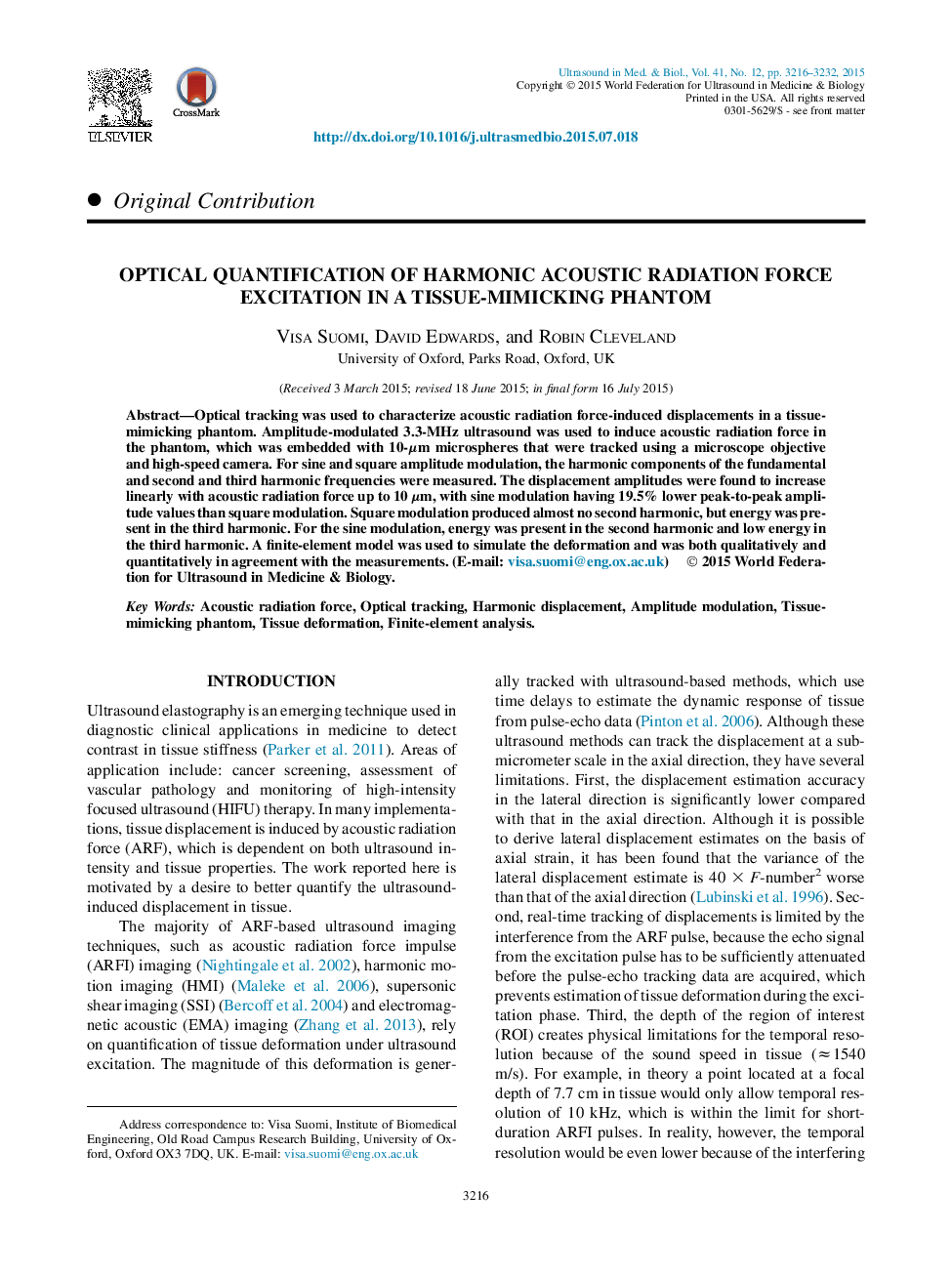| Article ID | Journal | Published Year | Pages | File Type |
|---|---|---|---|---|
| 10691311 | Ultrasound in Medicine & Biology | 2015 | 17 Pages |
Abstract
Optical tracking was used to characterize acoustic radiation force-induced displacements in a tissue-mimicking phantom. Amplitude-modulated 3.3-MHz ultrasound was used to induce acoustic radiation force in the phantom, which was embedded with 10-μm microspheres that were tracked using a microscope objective and high-speed camera. For sine and square amplitude modulation, the harmonic components of the fundamental and second and third harmonic frequencies were measured. The displacement amplitudes were found to increase linearly with acoustic radiation force up to 10 μm, with sine modulation having 19.5% lower peak-to-peak amplitude values than square modulation. Square modulation produced almost no second harmonic, but energy was present in the third harmonic. For the sine modulation, energy was present in the second harmonic and low energy in the third harmonic. A finite-element model was used to simulate the deformation and was both qualitatively and quantitatively in agreement with the measurements.
Keywords
Related Topics
Physical Sciences and Engineering
Physics and Astronomy
Acoustics and Ultrasonics
Authors
Visa Suomi, David Edwards, Robin Cleveland,
